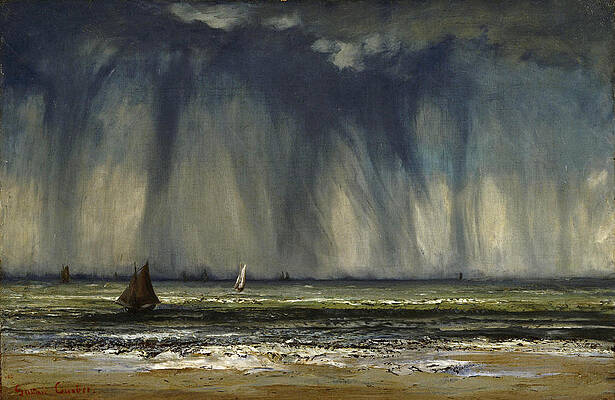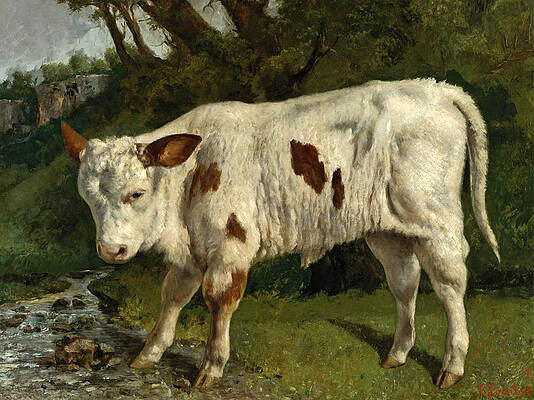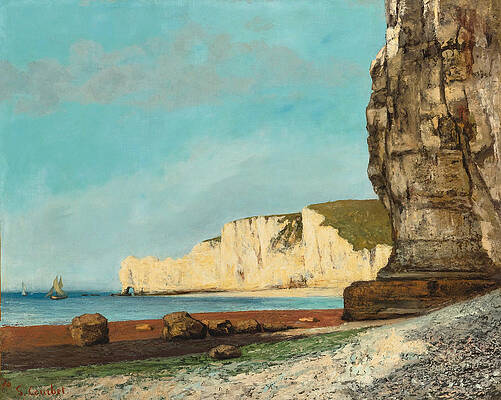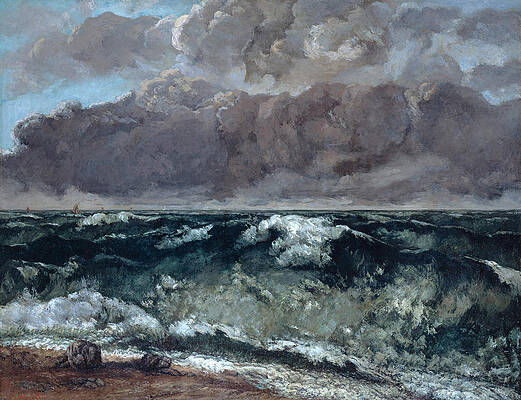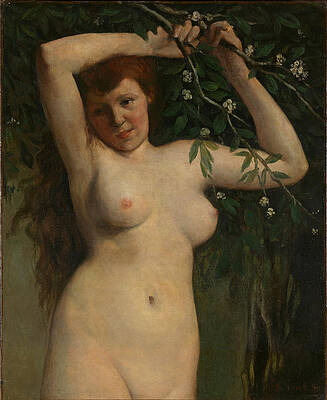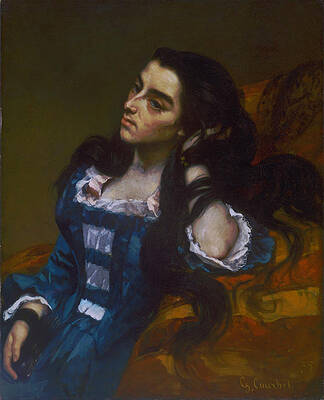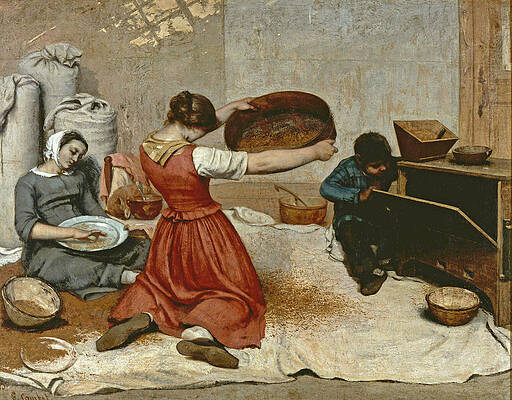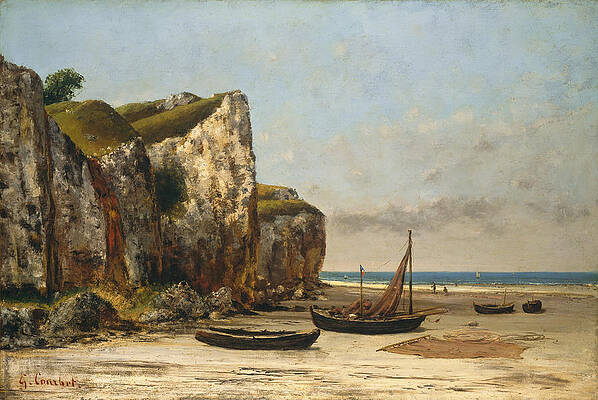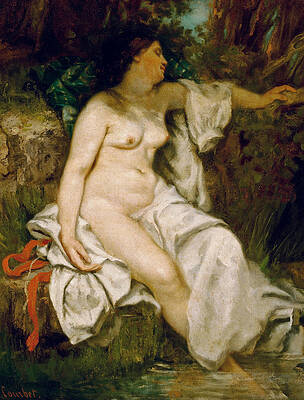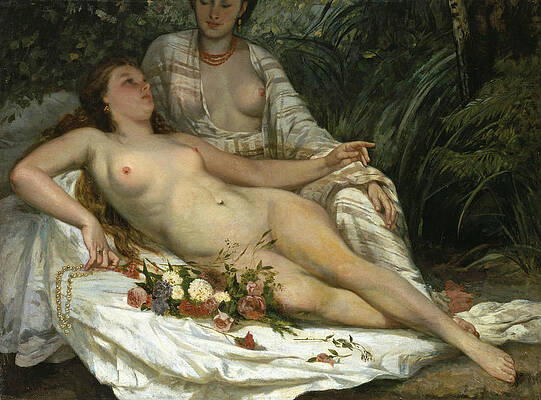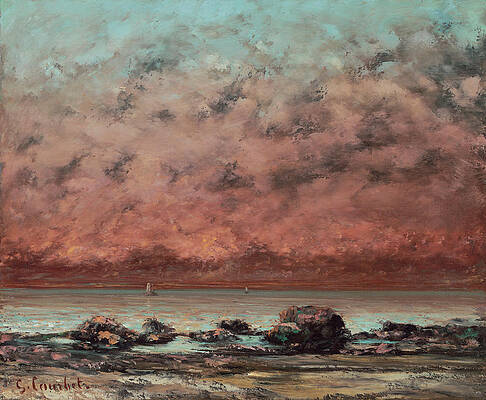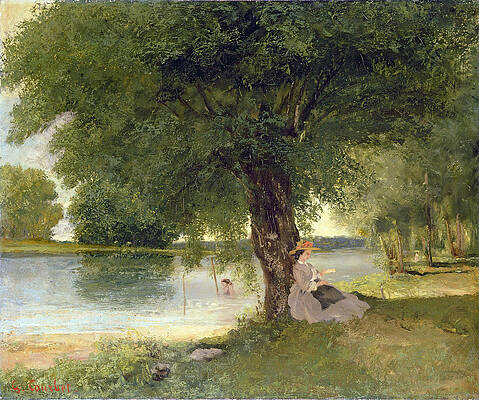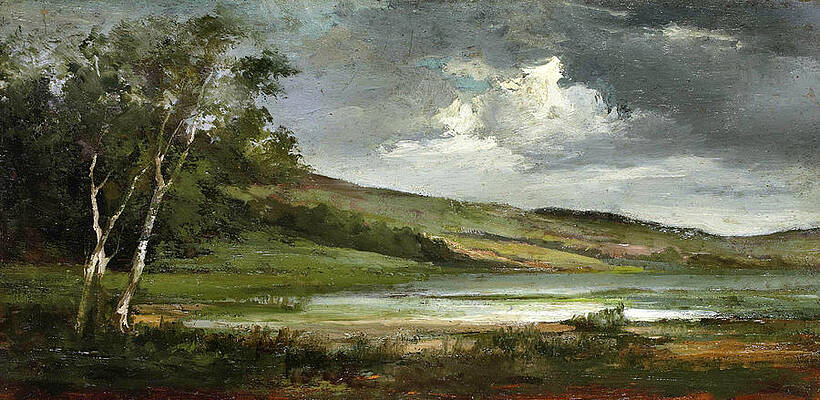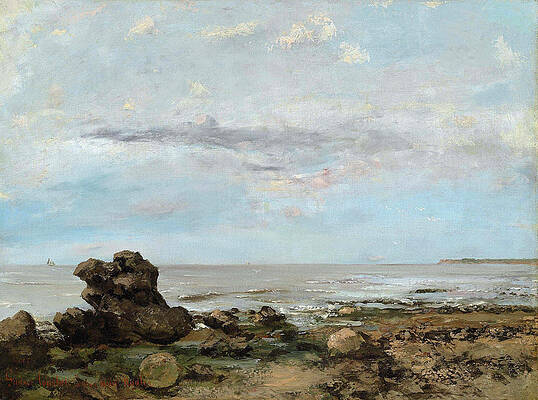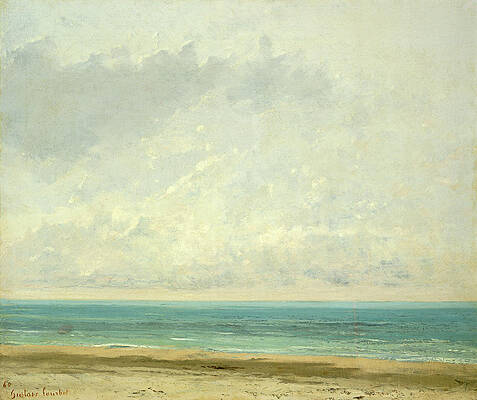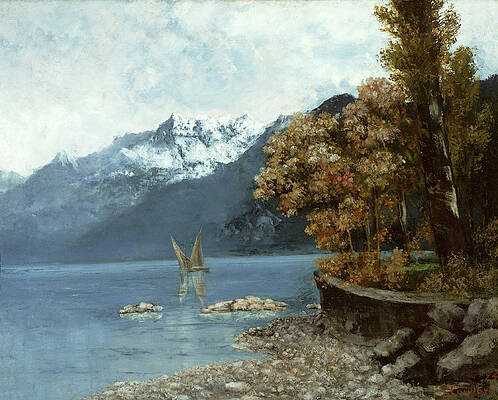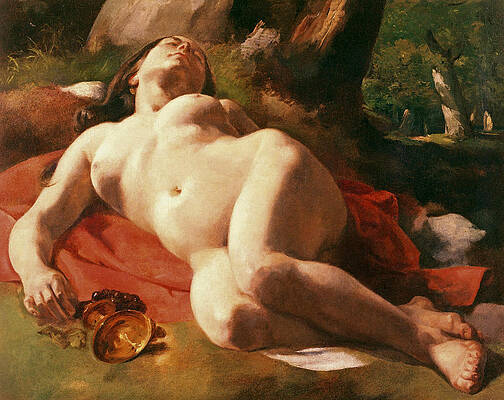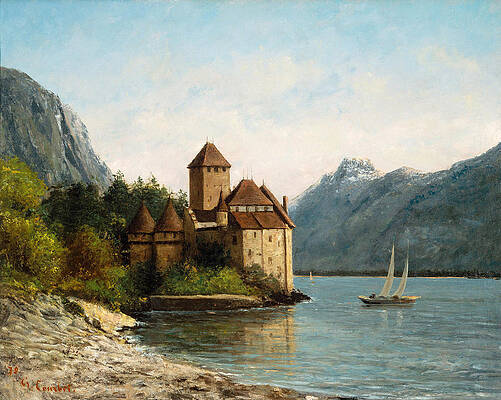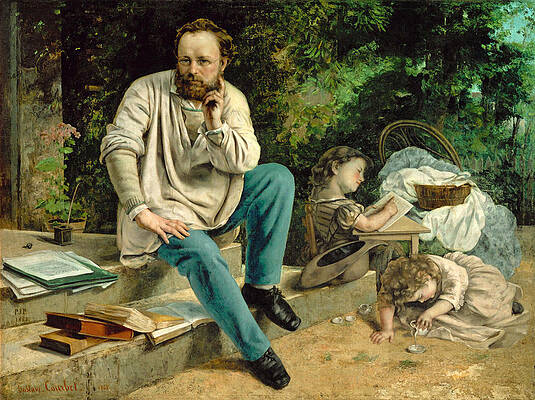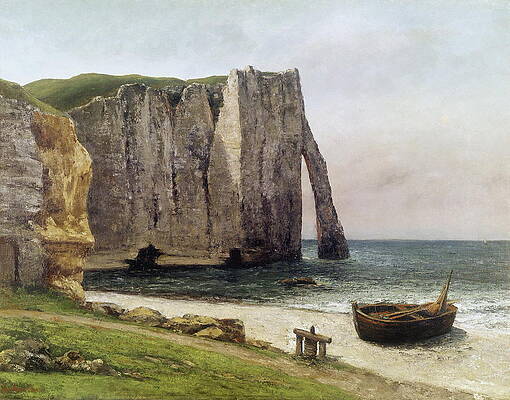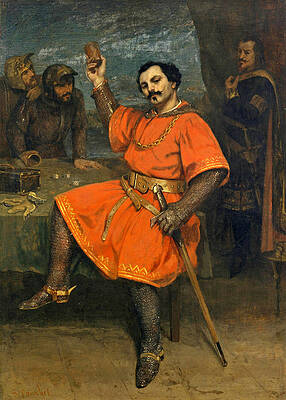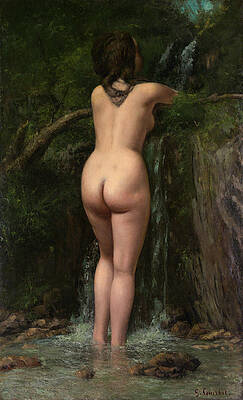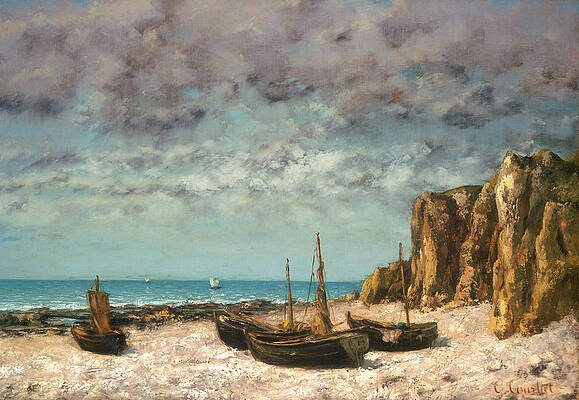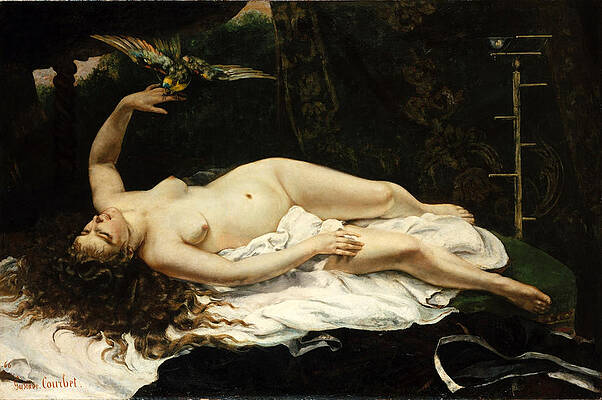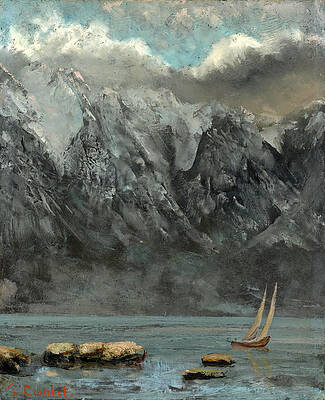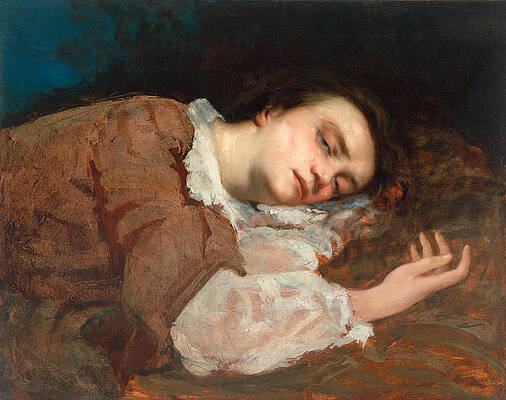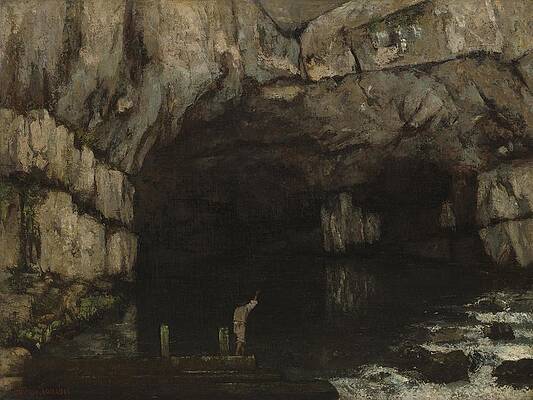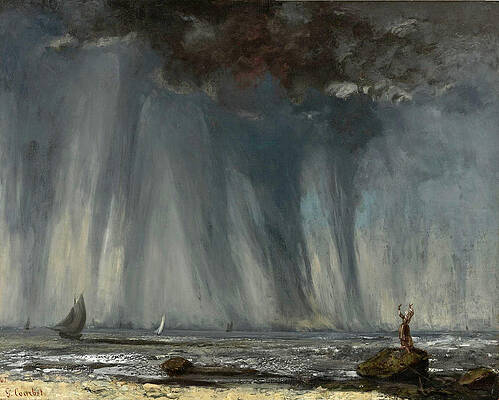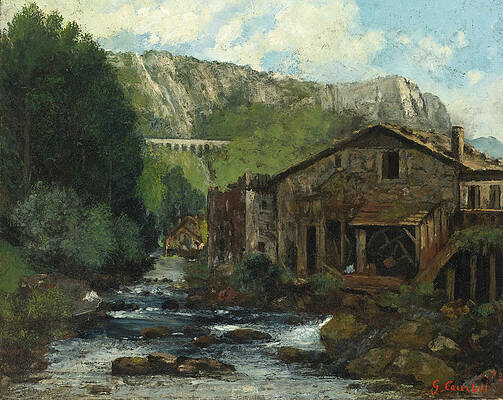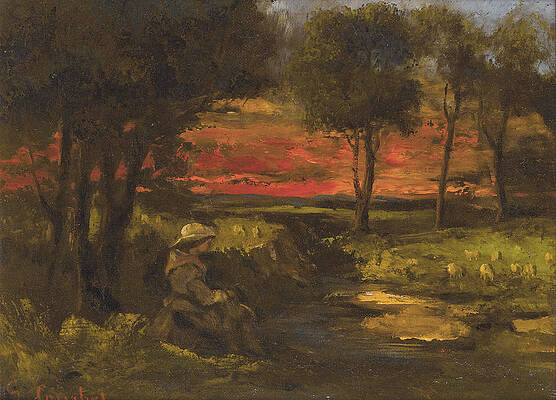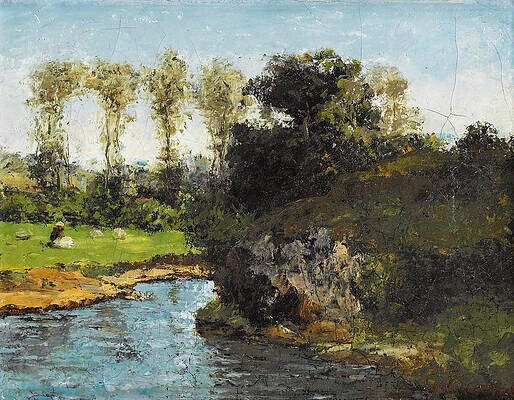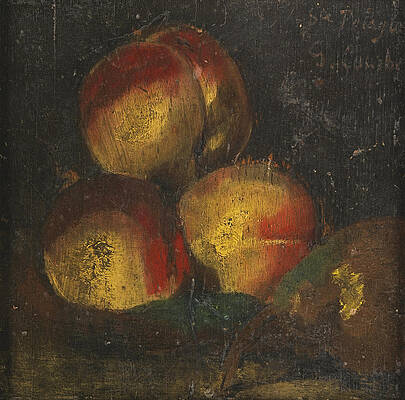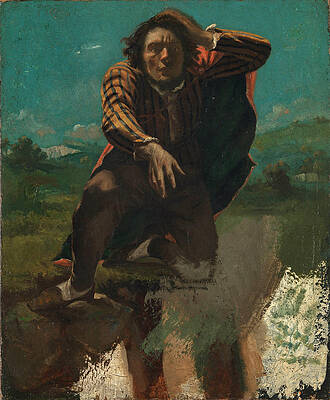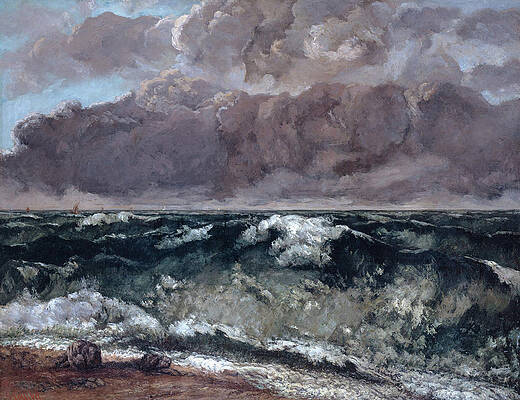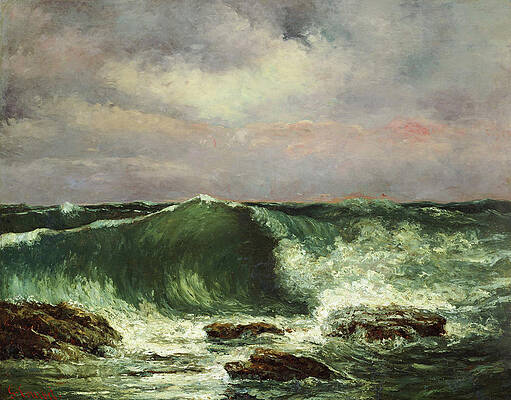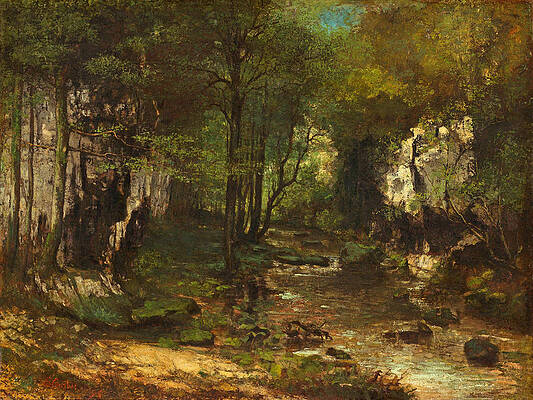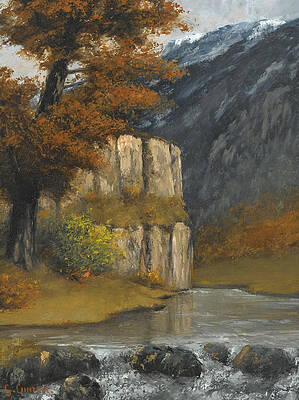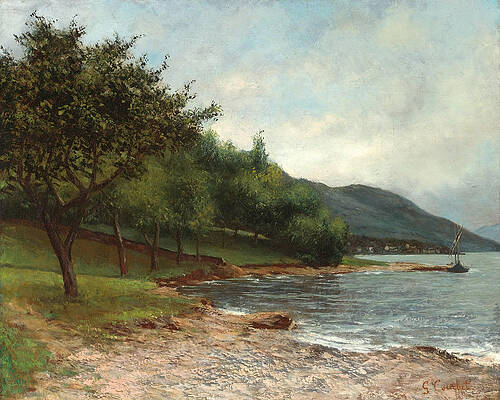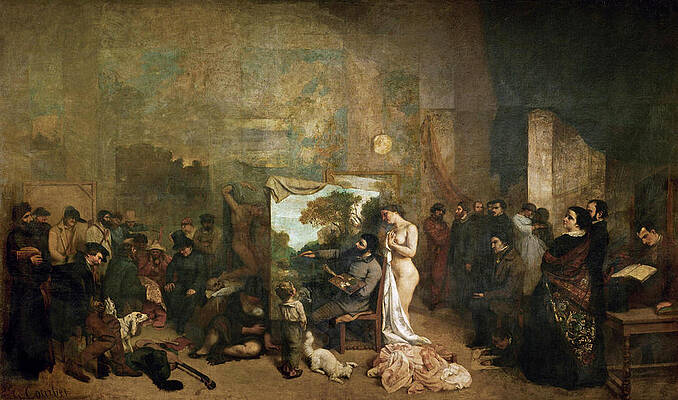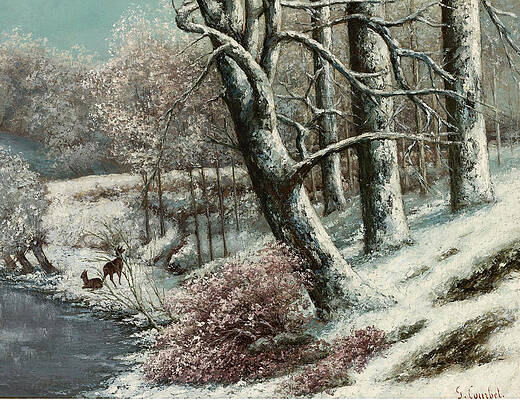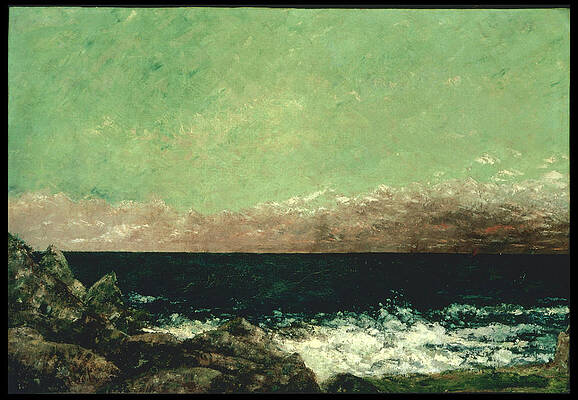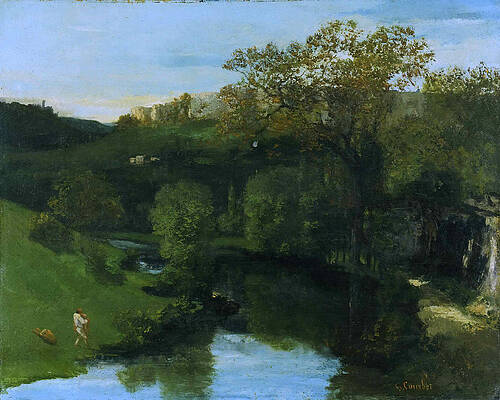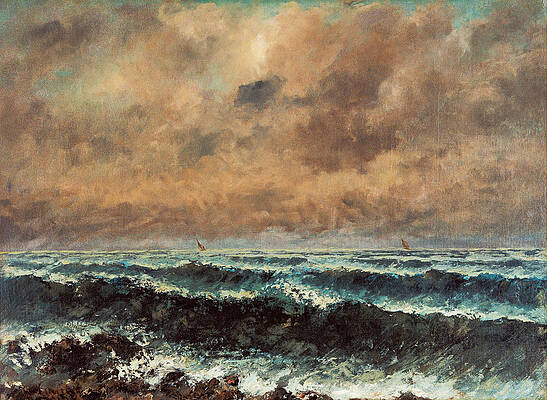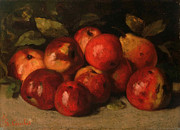Gustave Courbet
Paintings
The Gust of Wind
Snow Landscape in Jura
The White Calf
Etretat. The cliffs
L'Immensite
The Wave
Nude Woman with a Dog
Nude with Flowering Branch
Nu Couche
The Woman in the Waves
Spanish Woman
The Wheat Sifters
Beach in Normandy
Bather Sleeping By A Brook
Bathers or Two Nude Women
Sunset over Lake Leman
Flowering Branches and Flowers
The Black Rocks at Trouville
Young Ladies of the Village
The Charente at Port-Bertaud
Banks of the Mosson
The Beach at Trouville
Cliff by the Water
Calm Sea
Lake Leman
The Rock at Bayard. Dinant. Belgium
The Bacchante
The Castle of Chillon. Evening
Sunset Vevey Switzerland
Pierre Joseph Proudhon and his children
The Cliffs at Etretat
Louis Gueymard as Robert le Diable
Marine. The Waterspout
The Source
Boats on a Beach. Etretat
Woman with Pigeons
The Calm Sea
Woman with a Parrot
The Shore of Lake Geneva 2
Study for Girls on the banks of the Seine, Summer
La Grotte de la Loue
La Trombe
A Fox caught in a Trap
A Mill in a Rocky Landscape
Mme L, Laure Borreau
Breton Spinner
Landscape of Saintonge
Still Life with Three Peaches and a Pear
The Man Made Mad with Fear
The Wave
Waves
The Stream
Landscape near Ornans
Jo the Beautiful Irish Girl
Nude reclining by the sea
The Fringe of the Forest
The Shore of Lake Geneva
Bouquet of Flowers
Landscape with Wall and Orchard
The Painter's Studio. A Real Allegory of a Seven Year Phase in my Artistic and Moral Life
The Forest in Winter
Trellis
The Mediterranean
Valley
Waves
Autumn Sea
The Wrestlers
Still Life with Apples and a Pear
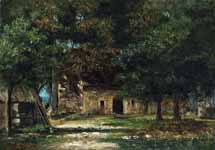
Le Jardin de la Mère Toutain à Honfleur
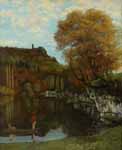
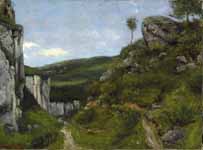
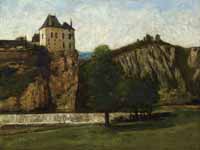
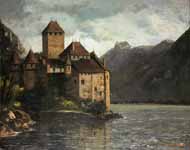
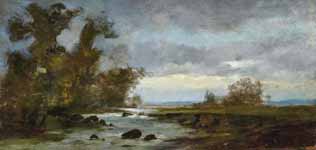
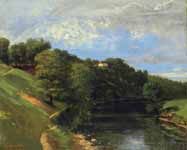
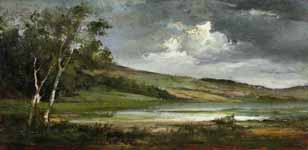
Banks of the Mosson Sunset Over Lake Leman

The Castle Of Chillon. Evening
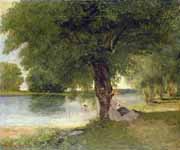
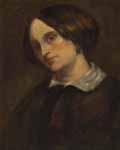
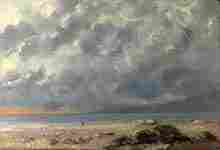
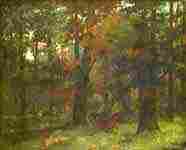
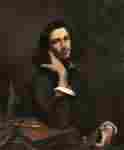
Self Portrait (L'Homme à la Ceinture de Cuir)
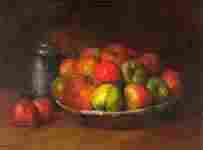
Still Life with Apples and a Pomegranate
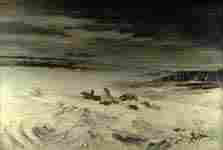
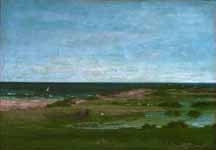
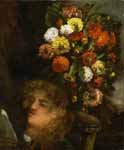
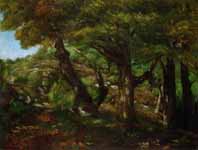
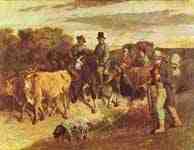
Farmers of Flagey on the Return From The Market

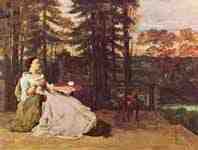
Lady on the terrace (Le dame de Francfort )
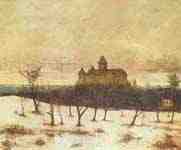

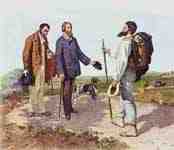
The Encounter ( Bonjour, Monsieur Courbet )
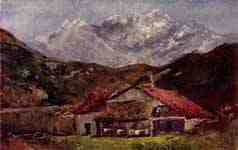
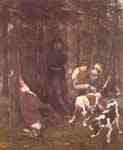
The booty (hunting with dogs )
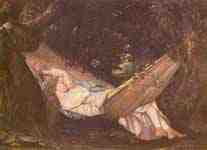
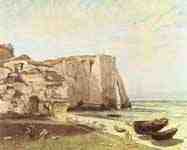

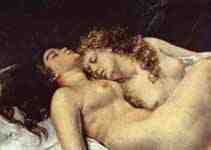
The sleepers ( sloth and lust ) , detail
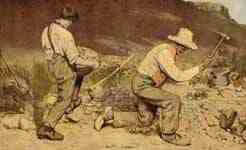
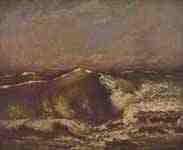
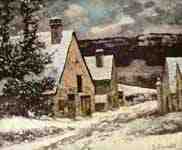

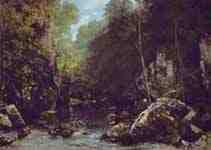
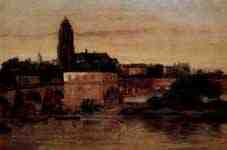
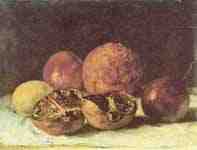
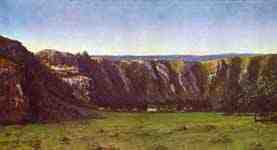
La roche de dix heures ( at Ornans )
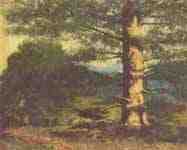
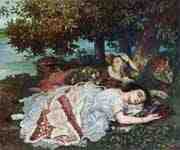
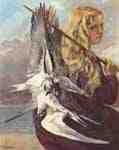
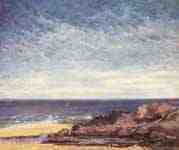

Afternoon in Ornans ( Une après- Dinée à Ornans )

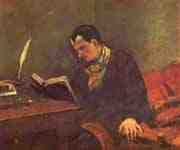
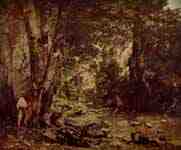

Deer reserve by the stream of Plaisir -Fontaine , detail
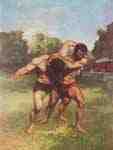
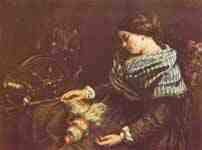
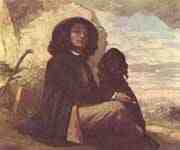
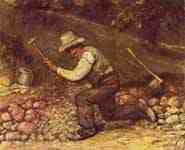
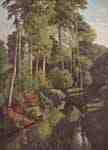
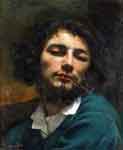
Drawings

Self-Portrait ( Man with Pipe )
Fine Art Prints | Greeting Cards | Phone Cases | Lifestyle | Face Masks | Men's , Women' Apparel | Home Decor | jigsaw puzzles | Notebooks | Tapestries | ...
Jean Désiré Gustave Courbet (French: [ɡystav kuʁbɛ]; 10 June 1819 – 31 December 1877) was a French painter who led the Realist movement in 19th-century French painting. Committed to painting only what he could see, he rejected academic convention and the Romanticism of the previous generation of visual artists. His independence set an example that was important to later artists, such as the Impressionists and the Cubists. Courbet occupies an important place in 19th-century French painting as an innovator and as an artist willing to make bold social statements through his work.
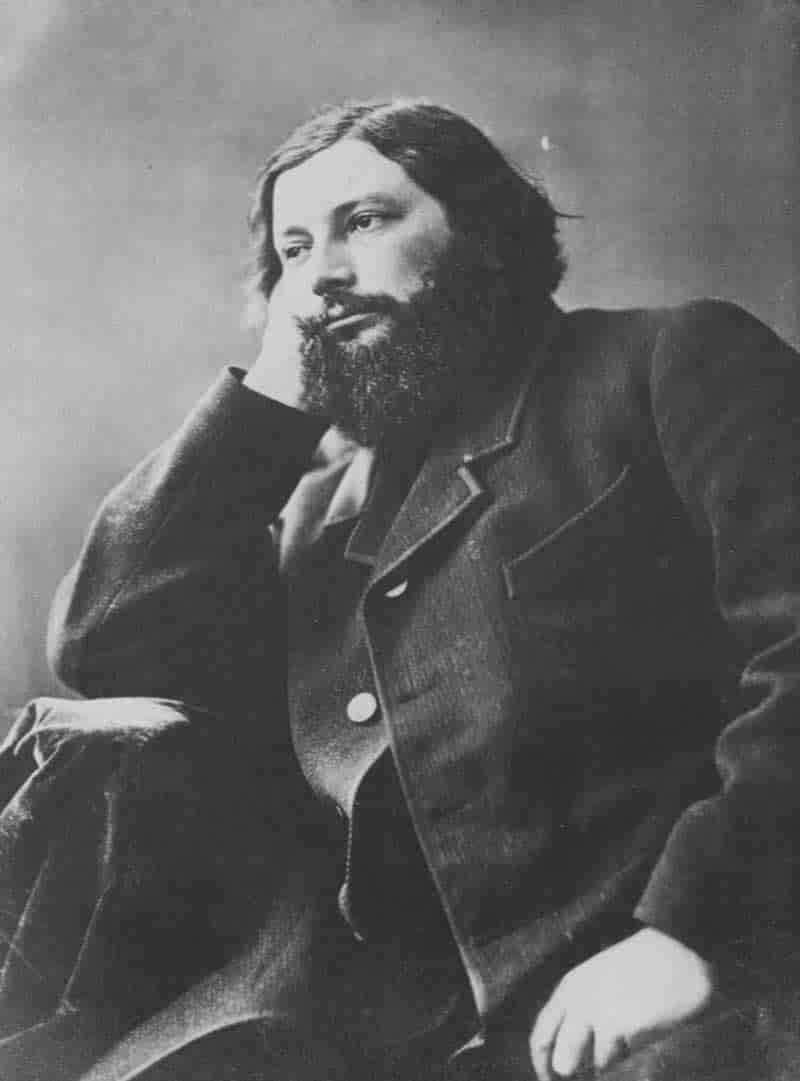
Courbet's paintings of the late 1840s and early 1850s brought him his first recognition. They challenged convention by depicting unidealized peasants and workers, often on a grand scale traditionally reserved for paintings of religious or historical subjects. Courbet's subsequent paintings were mostly of a less overtly political character: landscapes, seascapes, hunting scenes, nudes and still lifes. He was imprisoned for six months in 1871 for his involvement with the Paris Commune, and lived in exile in Switzerland from 1873 until his death.
I am fifty years old and I have always lived in freedom; let me end my life free; when I am dead let this be said of me: 'He belonged to no school, to no church, to no institution, to no academy, least of all to any régime except the régime of liberty.' [1]
Biography
Self-portrait (Man with a pipe), 1848–49
Les Demoiselles du bord de la Seine (1856): one of the most famous of Courbet's paintings. "The uncompromising emphasis on density and weight"[2]
Courbet was born in 1819 to Régis and Sylvie Oudot Courbet in Ornans (department of Doubs). Being a prosperous farming family, anti-monarchical feelings prevailed in the household. (His maternal grandfather fought in the French Revolution.) Courbet's sisters, Zoé, Zélie and Juliette, were his first models for drawing and painting. After moving to Paris he often returned home to Ornans to hunt, fish and find inspiration.[3]
He went to Paris in 1839 and worked at the studio of Steuben and Hesse. An independent spirit, he soon left, preferring to develop his own style by studying the paintings of Spanish, Flemish and French masters in the Louvre, and painting copies of their work.
His first works were an Odalisque inspired by the writing of Victor Hugo and a Lélia illustrating George Sand, but he soon abandoned literary influences, choosing instead to base his paintings on observed reality. Among his paintings of the early 1840s are several self-portraits, Romantic in conception, in which the artist portrayed himself in various roles. These include Self-Portrait with Black Dog (c. 1842–1844, accepted for exhibition at the 1844 Paris Salon), the theatrical Self-Portrait which is also known as Desperate Man (c. 1843–45), Lovers in the Countryside (1844, Musée des Beaux-Arts, Lyon), The Sculptor (1845), The Wounded Man (1844–1854, Musée d'Orsay, Paris), The Cellist, Self-Portrait (1847, Nationalmuseum, Stockholm, shown at the 1848 Salon), and The Man with a Pipe (c. 1848–1849, Musée d'Orsay, Paris).
Trips to the Netherlands and Belgium in 1846–1847 strengthened Courbet's belief that painters should portray the life around them, as Rembrandt, Hals and other Dutch masters had. By 1848, he had gained supporters among the younger critics, the Neo-romantics and Realists, notably Champfleury.[4]
Courbet achieved his first Salon success in 1849 with his painting After Dinner at Ornans. The work, reminiscent of Chardin and Le Nain, earned Courbet a gold medal and was purchased by the state.[5] The gold medal meant that his works would no longer require jury approval for exhibition at the Salon[6]—an exemption Courbet enjoyed until 1857 (when the rule changed).[7]
In 1849-50, Courbet painted Stone-Breakers (destroyed in the Allied Bombing of Dresden in 1945), which Proudhon admired as an icon of peasant life; it has been called "the first of his great works".[8] The painting was inspired by a scene Courbet witnessed on the roadside. He later explained to Champfleury and the writer Francis Wey: "It is not often that one encounters so complete an expression of poverty and so, right then and there I got the idea for a painting. I told them to come to my studio the next morning."[8]
Realism
The Wave (La Vague), 1869, oil on canvas, 66 x 90 cm, Musée des beaux-arts de Lyon
Courbet's work belonged neither to the predominant Romantic nor Neoclassical schools. History painting, which the Paris Salon esteemed as a painter's highest calling, did not interest him, for he believed that "the artists of one century [are] basically incapable of reproducing the aspect of a past or future century ..."[9] Instead, he maintained that the only possible source for living art is the artist's own experience.[9]
Courbet painted figurative compositions, landscapes, seascapes, and still lifes. He courted controversy by addressing social issues in his work, and by painting subjects that were considered vulgar, such as the rural bourgeoisie, peasants, and working conditions of the poor. His work, along with that of Honoré Daumier and Jean-François Millet, became known as Realism. For Courbet realism dealt not with the perfection of line and form, but entailed spontaneous and rough handling of paint, suggesting direct observation by the artist while portraying the irregularities in nature. He depicted the harshness in life, and in so doing challenged contemporary academic ideas of art.
A Burial at Ornans
Main article: A Burial At Ornans
Gustave Courbet, A Burial at Ornans, 1849-1850, oil on canvas, 314 x 663 cm.(123.6 x 261 inches), Musee d'Orsay, Paris. Exhibition at the 1850–1851 Paris Salon created an "explosive reaction" and brought Courbet instant fame.[10]
The Salon of 1850–1851[11] found him triumphant with The Stone Breakers, the Peasants of Flagey and A Burial at Ornans. The Burial, one of Courbet's most important works, records the funeral of his grand uncle[12] which he attended in September 1848. People who attended the funeral were the models for the painting. Previously, models had been used as actors in historical narratives, but in Burial Courbet said he "painted the very people who had been present at the interment, all the townspeople". The result is a realistic presentation of them, and of life in Ornans.
The vast painting—it measures 10 by 22 feet (3.1 by 6.6 meters)—drew both praise and fierce denunciations from critics and the public, in part because it upset convention by depicting a prosaic ritual on a scale which would previously have been reserved for a religious or royal subject.
According to the art historian Sarah Faunce, "In Paris the Burial was judged as a work that had thrust itself into the grand tradition of history painting, like an upstart in dirty boots crashing a genteel party, and in terms of that tradition it was of course found wanting."[13] The painting lacks the sentimental rhetoric that was expected in a genre work: Courbet's mourners make no theatrical gestures of grief, and their faces seemed more caricatured than ennobled. The critics accused Courbet of a deliberate pursuit of ugliness.[13]
Eventually, the public grew more interested in the new Realist approach, and the lavish, decadent fantasy of Romanticism lost popularity. The artist well understood the importance of the painting. Courbet said of it, "The Burial at Ornans was in reality the burial of Romanticism."
Courbet became a celebrity, and was spoken of as a genius, a "terrible socialist" and a "savage".[13] He actively encouraged the public's perception of him as an unschooled peasant, while his ambition, his bold pronouncements to journalists, and his insistence on depicting his own life in his art gave him a reputation for unbridled vanity.[13]
Courbet associated his ideas of realism in art with political anarchism, and, having gained an audience, he promoted democratic and socialist ideas by writing politically motivated essays and dissertations. His familiar visage was the object of frequent caricature in the popular French press.
In 1850, he wrote to a friend:
...in our so very civilized society it is necessary for me to live the life of a savage. I must be free even of governments. The people have my sympathies, I must address myself to them directly.[14]
During the 1850s, Courbet painted numerous figurative works using common folk and friends as his subjects, such as Village Damsels (1852), the Wrestlers (1853), Bathers (1853), The Sleeping Spinner (1853), and The Wheat Sifters (1854).
The Artist's Studio
The Artist's Studio (L'Atelier du peintre): A Real Allegory of a Seven Year Phase in my Artistic and Moral Life, 1855, 359 × 598 cm (141.33 × 235.43 in), oil on canvas, Musée d'Orsay, Paris
In 1855, Courbet submitted fourteen paintings for exhibition at the Exposition Universelle. Three were rejected for lack of space, including A Burial at Ornans and his other monumental canvas The Artist's Studio.[15] Refusing to be denied, Courbet took matters into his own hands. He displayed forty of his paintings, including The Artist's Studio, in his own gallery called The Pavilion of Realism (Pavillon du Réalisme) which was a temporary structure that he erected next door to the official Salon-like Exposition Universelle.[15]
The work is an allegory of Courbet's life as a painter, seen as an heroic venture, in which he is flanked by friends and admirers on the right, and challenges and opposition to the left. Friends on the right include the art critics Champfleury, and Charles Baudelaire, and art collector Alfred Bruyas. On the left are figures (priest, prostitute, grave digger, merchant and others) who represent what Courbet described in a letter to Champfleury as "the other world of trivial life, the people, misery, poverty, wealth, the exploited and the exploiters, the people who live off death."[16]
In the foreground of the left-hand side is a man with dogs, who was not mentioned in Courbet's letter to Champfleury. X-rays show he was painted in later, but his role in the painting is important: he is an allegory of the then current French Emperor, Napoleon III, identified by his famous hunting dogs and iconic twirled moustache. By placing him on the left, Courbet publicly shows his disdain for the emperor and depicts him as a criminal, suggesting that his "ownership" of France is an illegal one.[17]
Although artists like Eugène Delacroix were ardent champions of his effort, the public went to the show mostly out of curiosity and to deride him. Attendance and sales were disappointing,[18] but Courbet's status as a hero to the French avant-garde became assured. He was admired by the American James McNeill Whistler, and he became an inspiration to the younger generation of French artists including Édouard Manet and the Impressionist painters. The Artist's Studio was recognized as a masterpiece by Delacroix, Baudelaire, and Champfleury, if not by the public.
Realist manifesto
Courbet wrote a Realist manifesto for the introduction to the catalogue of this independent, personal exhibition, echoing the tone of the period's political manifestos. In it he asserts his goal as an artist "to translate the customs, the ideas, the appearance of my epoch according to my own estimation."[19]
The title of Realist was thrust upon me just as the title of Romantic was imposed upon the men of 1830. Titles have never given a true idea of things: if it were otherwise, the works would be unnecessary.
Without expanding on the greater or lesser accuracy of a name which nobody, I should hope, can really be expected to understand, I will limit myself to a few words of elucidation in order to cut short the misunderstandings.
I have studied the art of the ancients and the art of the moderns, avoiding any preconceived system and without prejudice. I no longer wanted to imitate the one than to copy the other; nor, furthermore, was it my intention to attain the trivial goal of "art for art's sake". No! I simply wanted to draw forth, from a complete acquaintance with tradition, the reasoned and independent consciousness of my own individuality.
To know in order to do, that was my idea. To be in a position to translate the customs, the ideas, the appearance of my time, according to my own estimation; to be not only a painter, but a man as well; in short, to create living art - this is my goal. (Gustave Courbet, 1855)[20]
Notoriety
Portrait of Jo (La belle Irlandaise), 1865–66, Metropolitan Museum of Art, a painting of Joanna Hiffernan, the probable model for L'Origine du monde and for Sleep
In the Salon of 1857 Courbet showed six paintings. These included Young Ladies on the Banks of the Seine (Summer), depicting two prostitutes under a tree, as well as the first of many hunting scenes Courbet was to paint during the remainder of his life: Hind at Bay in the Snow and The Quarry.[7]
Young Ladies on the Banks of the Seine, painted in 1856,[21] provoked a scandal. Art critics accustomed to conventional, "timeless" nude women in landscapes were shocked by Courbet's depiction of modern women casually displaying their undergarments.[22]
By exhibiting sensational works alongside hunting scenes, of the sort that had brought popular success to the English painter Edwin Landseer, Courbet guaranteed himself "both notoriety and sales".[23] During the 1860s, Courbet painted a series of increasingly erotic works such as Femme nue couchée.
This culminated in The Origin of the World (L'Origine du monde) (1866), which depicts female genitalia and was not publicly exhibited until 1988,[24] and Sleep (1866), featuring two women in bed. The latter painting became the subject of a police report when it was exhibited by a picture dealer in 1872.[25]
Nude Woman with a Dog (Femme nue au chien), c. 1861–62, oil on canvas, 65 x 81 cm Musée d'Orsay, Paris
Until about 1861, Napoléon's regime had exhibited authoritarian characteristics, using press censorship to prevent the spread of opposition, manipulating elections, and depriving Parliament the right to free debate or any real power. In the 1860s, however, Napoléon III made more concessions to placate his liberal opponents. This change began by allowing free debates in Parliament and public reports of parliamentary debates. Press censorship, too, was relaxed and culminated in the appointment of the Liberal Émile Ollivier, previously a leader of the opposition to Napoléon's regime, as the de facto Prime Minister in 1870. As a sign of appeasement to the Liberals who admired Courbet, Napoleon III nominated him to the Legion of Honour in 1870. His refusal of the cross of the Legion of Honour angered those in power but made him immensely popular with those who opposed the prevailing regime.
Courbet and the Paris Commune
A satirical sketch of Gustave Courbet taking down a "Rambuteau column" (a urinal), caricature published by a popular Commune newspaper, the Père Duchêne illustré
Commune officials pose with the wreckage of the Vendôme column, pulled down based on a suggestion of Courbet. After the fall of the Commune, he was ordered to pay the cost of putting the column back up.
One of a series of still-life paintings Courbet made while in prison for his role in the Commune (1871). He was allowed an easel and paints, but he could not have models pose for him.
On 4 September 1870, during the Franco-Prussian War, Courbet made a proposal that later came back to haunt him. He wrote a letter to the Government of National Defense, proposing that the column in the Place Vendôme, erected by the Napoleon I to honour the victories of the French Army, be taken down. He wrote:
In as much as the Vendôme Column is a monument devoid of all artistic value, tending to perpetuate by its expression the ideas of war and conquest of the past imperial dynasty, which are reproved by a republican nation's sentiment, citizen Courbet expresses the wish that the National Defense government will authorize him to disassemble this column."[26]
Courbet proposed that the Column be moved to a more appropriate place, such as the Hotel des Invalides, a military hospital. He also wrote an open letter addressed to the German Army and to German artists, proposing that German and French cannons should be melted down and crowned with a liberty cap, and made into a new monument on Place Vendôme, dedicated to the federation of the German and French people. The Government of National Defense did nothing about his suggestion to tear down the column, but it was not forgotten.[27]
On 18 March, in the aftermath of the French defeat in the Franco-Prussian War, a revolutionary government called the Paris Commune briefly took power in the city. Courbet played an active part, and organized a Federation of Artists, which held its first meeting on 5 April in the Grand Amphitheater of the School of Medicine. Some three hundred to four hundred painters, sculptors, architects and decorators attended. There were some famous names on the list of members, including André Gill, Honoré Daumier, Jean-Baptiste-Camille Corot, Eugène Pottier, Jules Dalou, and Eduard Manet. Manet was not in Paris during the Commune, and did not attend, and Corot, who was seventy-five years old, stayed in a country house and in his studio during the Commune, not taking part in the political events. Courbet chaired the meeting and proposed that the Louvre and the Museum of the Luxembourg Palace, the two major art museums of Paris, closed during the uprising, be reopened as soon as possible, and that the traditional annual exhibit called the Salon be held as in years past, but with radical differences. He proposed that the Salon should be free of any government interference or rewards to preferred artists; there would be no medals or government commissions given. Furthermore, he called for the abolition of the most famous state institutions of French art; the Ecole des Beaux-Arts, the School of Rome, the School of Athens, and the Fine Arts section of the Institute of France.[28]
On 12 April, the Executive Committee of the Commune gave Courbet, though he was not yet officially a member of the Commune, the assignment of opening the museums and organizing the Salon. At the same meeting, they issued the following decree: “The Column of the Place Vendôme will be demolished.”[29] On 16 April, special elections were held to replace more moderate members of the Commune who had resigned their seats, and Courbet was elected as a delegate for the 6th arrondissement. He was given the title of Delegate of Fine Arts, and on 21 April he was also made a member of the Commission on Education. At the meeting of the Commission on 27 April, the minutes reported that Courbet requested the demolition of the Vendôme column be carried out, and that column would be replaced by an allegorical figure representing the taking of power of the Commune on 18 March.[29]
Nonetheless, Courbet was a dissident by nature, and he was soon in opposition with the majority of the Commune members on some of its measures. He was one of a minority of Commune Members which opposed the creation of a Committee on Public Safety, modeled on the committee of the same name which carried out the reign of terror during the French Revolution.[30]
Courbet opposed the Commune on another more serious matter; the arrest of his friend Gustave Chaudey, a prominent socialist, magistrate, and journalist, whose portrait Courbet had painted. The popular Commune newspaper, ‘’Le Père Duchesne’’, accused Chaudey, when he was briefly deputy mayor of the 9th arrondissement before the Commune was formed, of ordering soldiers to fire on a crowd that had surrounded the Hotel de Ville. Courbet’s opposition was of no use; on 23 May 1871, in the final days of the Commune, Chaudey was shot by a Commune firing squad. According to some sources Courbet resigned from the Commune in protest.[31]
On 13 May, on the proposal of Courbet, the Paris house of Adolphe Thiers, the chief executive of the French government, was demolished, and his art collection confiscated. Courbet proposed that the confiscated art be given to the Louvre and other museums, but the director of the Louvre refused to accept it.[32] On 16 May, just nine days before the fall of the Commune, in a large ceremony with military bands and photographers, the Vendôme column was pulled down and broke into pieces. Some witnesses said Courbet was there, others denied it. The following day, the Federation of Artists debated dismissing directors of the Louvre and of the Luxembourg museums, suspected by some in the Commune of having secret contacts with the French government, and appointed new heads of the museums.
According to one legend, Courbet defended the Louvre and other museums against “looting mobs”, but there are no records of any such attacks on the museums. The only real threat to the Louvre came during "Bloody Week”, 21–28 May 1871, when a unit of Communards, led by a Commune general, Jules Bergeret, set fire to the Tuileries Palace, next to the Louvre.[33] The fire spread to the library of the Louvre, which was completely destroyed, but the efforts of museum curators and firemen saved the art gallery.[34]
After the final suppression of the Commune by the French army on 28 May, Courbet went into hiding in apartments of different friends. He was arrested on 7 June. At his trial before a military tribunal on 14 August, Courbet argued that he had only joined the Commune to pacify it, and that he had wanted to move the Vendôme Column, not destroy it. He said he had only belonged to the Commune for a short period of time, and rarely attended its meetings. He was convicted, but given a lighter sentence than other Commune leaders; six months in prison and a fine of five hundred Francs. Serving part of his sentence in the prison of Saint-Pelagie in Paris, he was allowed an easel and paints, but he could not have models pose for him. He did a famous series of still-life paintings of flowers and fruit.[35] [36]
Exile and death
The Trout, 1871
Courbet finished his prison sentence on 2 March 1872, but his problems caused by the destruction of the Vendôme Column were still not over. In 1873, the newly elected president of the Republic, Patrice Mac-Mahon, announced plans to rebuild the column, with the cost to be paid by Courbet. Unable to pay, Courbet went into a self-imposed exile in Switzerland to avoid bankruptcy. In the following years, he participated in Swiss regional and national exhibitions. Surveilled by the Swiss intelligence service, he enjoyed in the small Swiss art world the reputation as head of the “realist school” and inspired younger artists such as Auguste Baud-Bovy and Ferdinand Hodler.[37]
Important works from this period include several paintings of trout, "hooked and bleeding from the gills",[38] that have been interpreted as allegorical self-portraits of the exiled artist.[38] Courbet also worked on sculpture during his exile. Previously, in the early 1860s, he had produced a few sculptures, one of which—the Fisherman of Chavots (1862)—he donated to Ornans for a public fountain, but it was removed after Courbet's arrest.[39]
On 4 May 1877, Courbet was told the estimated cost of reconstructing the Vendôme Column; 323,091 francs and 68 centimes. He was given the option paying the fine in yearly installments of 10,000 francs for the next 33 years, until his 91st birthday. On 31 December 1877, a day before the first installment was due,[40] Courbet died, aged 58, in La Tour-de-Peilz, Switzerland, of a liver disease aggravated by heavy drinking.
Legacy
Claude Monet, Le Déjeuner sur l’herbe (right section), with Gustave Courbet, 1865–66, Musée d'Orsay, Paris
Courbet was admired by many younger artists. Claude Monet included a portrait of Courbet in his own version of Le Déjeuner sur l’herbe from 1865–1866. Courbet's particular kind of realism influenced many artists to follow, notably among them the German painters of the Leibl circle,[41] James McNeill Whistler, and Paul Cézanne. Courbet's influence can also be seen in the work of Edward Hopper, whose Bridge in Paris (1906) and Approaching a City (1946) have been described as Freudian echoes of Courbet's The Source of the Loue and The Origin of the World.[42] His pupils included Henri Fantin-Latour, Hector Hanoteau and Olaf Isaachsen.
Courbet and Cubism
Two 19th-century artists prepared the way for the emergence of Cubism in the 20th century: Courbet and Cézanne.[43] Cézanne’s contributions are well-known.[44] Courbet’s importance was announced by Guillaume Apollinaire, poet-spokesperson for the Cubists. Writing in Les Peintres Cubistes (1913) he declared, “Courbet is the father of the new painters.”
Both artists sought to transcend the conventional methods of rendering nature; Cézanne through a dialectical method revealing the process of seeing, Courbet by his materialism.[45] The Cubists would combine these two approaches in developing a revolution in art.[46]
On a formal level, Courbet wished to convey the physical characteristics of what he was painting: its density, weight and texture. Art critic John Berger said "No painter before Courbet was ever able to emphasize so uncompromisingly the density and weight of what he was painting."[47] This emphasis on material reality endowed his subjects with dignity.[48] Berger observed that the Cubist painters "were at great pains to establish the physical presence of what they were representing. And in this they are the heirs of Courbet."[49]
Notes and references
Notes
Courbet, Gustave: Letters of Gustave Courbet, 1992, University of Chicago Press, Translated by Petra Ten-Doesschate Chu, ISBN 0-226-11653-0. (Google Books)
Berger, 1965, p. 52: "You can see it in the way [Courbet] painted an apple or a wave, or in the way he painted the heavy languor and creased dresses of two girls lying by the Seine."
Avis Berman, "Larger than Life", Smithsonian Magazine, April 2008.
Faunce, Sarah and Linda Nochlin, 1988, p. 83.
Masanès, Fabrice 2006, pp. 31–32.
Masanès, Fabrice 2006, p. 30.
Masanès, Fabrice 2006, p. 55.
Masanès, Fabrice 2006, p. 31.
Faunce, Sarah; Courbet, Gustave; and Nochlin, Linda 1988, p. 7.
Pbs.org. Gustave Courbet's A Burial at Ornans
Political turmoil delayed the opening of the Salon of 1850 until 30 December 1850. Faunce, Sarah; Courbet, Gustave; and Nochlin, Linda 1988, p. 2.
Faunce, Sarah; Courbet, Gustave; and Nochlin, Linda 1988, p. 79.
Faunce, Sarah; Courbet, Gustave; and Nochlin, Linda 1988, p. 4.
Courbet, Gustave: artchive.com citing Perl, Jed: Gallery Going: Four Seasons in the Art World, 1991, Harcourt, ISBN 978-0-15-134260-0.
Masanès, Fabrice 2006, p. 52.
Masanès, Fabrice 2006, p. 48.
Helene Toussaint, Arts Council of Great Britain. [An exhibition organ. by the Réunion des Musées Nationaux. Organ. committee: Alan Bowness...] (1978). Gustave Courbet, 1819-1877 : [exhibition] at the Royal Academy of Arts, 19 January-19 March 1978 : [catalog]. [London]: Arts Council of Great Britain. p. 265. ISBN 0-7287-0152-9.
Faunce, Sarah; Courbet, Gustave; and Nochlin, Linda 1988, p. 84.
The Metropolitan Museum of Art, Nineteenth–Century French Realism, Heilbrunn Timeline of Art History
Exhibition and sale of forty paintings and four drawings by Gustave Courbet, Paris 1855, Courbet speaks, Musée d'Orsay
"Gustave Courbet – Les Demoiselles Au Bord De La Seine". art.yodelout.com. Retrieved June 2014.
"Young Ladies on the Bank of the Seine, National Galleries". www.nationalgallery.org. Retrieved June 2014.
Schwabsky, Barry 2008, p. 30.
Schwabsky, Barry 2008, p. 34.
Faunce, Sarah; Courbet, Gustave; and Nochlin, Linda 1988, p. 176.
"Attendu que la colonne Vendôme est un monument dénué de toute valeur artistique, tendant à perpétuer par son expression les idées de guerre et de conquête qui étaient dans la dynastie impériale, mais que réprouve le sentiment d’une nation républicaine, [le citoyen Courbet] émet le vœu que le gouvernement de la Défense nationale veuille bien l’autoriser à déboulonner cette colonne. [1],
Milza, Pierre, L'année terrible- La Commune, p. 294.
Milza, Pierre, L'année terrible- La Commune, pp 296–297.
Riat, Georges, ‘’Gustave Courbet - peintre”.
Milza, Pierre, L'année terrible- La Commune, pp 294-295
See French Wikipedia article on Courbet
Milza, Pierre, L'année terrible- La Commune, pp 294-296-297
Milza, Pierre, ‘’L’annee terrible- La Commune- Mars-Juin 1871’’. pp 396–397.
Rene Heron de Villefosse, Histoire de Paris, Bernard Grasset (1959).
Riat, Georges, Gustave Courbet- peintre. (1906),
Riat, Georges, ‘’Gustave Courbet - peintre, pp. 120-122
Fischer, Matthias 2009, pp. 57–80.
Danto, Arthur C. "Courbet", The Nation, January 23, 1989, p. 100.
Herding, Oxford Art Online.
Noël, Bernard 1978
Forster-Hahn, Françoise, et al. 2001, p. 155.
Wells, Walter, Silent Theater: The Art of Edward Hopper, London/New York: Phaidon, 2007.
Berger, 1965, p. 51: “The preparations for the revolution of Cubism were begun in the nineteenth century by two artists: Courbet and Cézanne.” and p. 55: “the revolutionary inheritance that the nineteenth century bequeathed to the twentieth century: the materialism of Courbet and the dialectic of Cézanne.”
Berger, 1965, p. 51: “The importance of Cézanne for the Cubists has been stressed so often that it has become a commonplace.”
Berger, 1965, p. 51-52: “Both Courbet and Cézanne change the emphasis of the painters approach to nature: Courbet by his materialism, Cézanne in his dialectical view of the process of looking at nature.”
Berger, 1965, p.55-56: “The task was to combine the two. Followed up separately, each would lead to a cul-de-sac: Courbet’s materialism would become mechanical; the force of gravity, which gave such dignity to his subjects, would become oppressive and literal. Cézanne’s dialectic would become more and more disembodied and its harmony would be obtained at the price of physical indifference. Today, both examples are followed up separately. (italics in original)
Berger, 1965, p. 52
Berger, 1965, p. 52-53: “Courbet, whilst still using paint on canvas, wanted to go beyond [pictorial] conventions and find the equivalent of the physical sensation of the material objects portrayed: their weight, their temperature, their texture. What perspective towards the horizon meant to Poussin, the force of gravity meant to Courbet.” (italics in original)
Berger, 1965, p. 58
References
Berger, John (1965). The Success and Failure of Picasso. Penguin Books, Ltd. p. 73. ISBN 978-0-679-73725-4.
Champfleury, Les Grandes Figures d’hier et d’aujourd’hui (Paris, 1861)
Chu, Petra ten Doesschate. Courbet in Perspective. (Prentice Hall, 1977) ASIN B000OIFL3E
Chu, Petra ten Doesschate and Gustave Courbet. Letters of Gustave Courbet. (Chicago: Univ Chicago Press, 1992) ISBN 0-226-11653-0
Chu, Petra ten Doesschate. The Most Arrogant Man in France: Gustave Courbet and the Nineteenth-Century Media Culture. (Princeton, NJ: Princeton University Press, 2007) ISBN 0-691-12679-8
Clark, Timothy J., Image of the People: Gustave Courbet and the 1848 Revolution, (Berkeley: University of California Press, 1999); (Originally published 1973. Based on his doctoral dissertation along with The Absolute Bourgeois: Artists and Politics in France, 1848-1851), 208pp. ISBN 978-0-520-21745-4. (Considered the definitive treatment of Courbet's politics and painting in 1848, and a foundational text of Marxist art history).
Danto, Arthur (January 23, 1989). "Courbet". The Nation: 97–100.
Faunce, Sarah, and Linda Nochlin. Courbet reconsidered. Issued on the occasion of an exhibition to open at the Brooklyn Museum Nov. 4, 1988 - Jan. 16, 1989, the Minneapolis Inst. of Arts Febr. 18 - April 30, 1989. Brooklyn, NY: Brooklyn Museum, 1988. ISBN 0-300-04298-1
Fischer, Matthias, Der junge Hodler. Eine Künstlerkarriere 1872-1897, Wädenswil: Nimbus, 2009. ISBN 978-3-907142-30-1
Forster-Hahn, Françoise, et al., Spirit of an Age: Nineteenth-Century Paintings From the Nationalgalerie, Berlin (London: National Gallery Company, 2001) ISBN 1-85709-981-8
Harriet Griffiths & Alister Mill, Courbet's early Salon exhibition record, Database of Salon Artists, 1827-1850
Herding, Klaus. "Courbet, Gustave". Grove Art Online. Oxford Art Online. Oxford University Press. Web.
Hutchinson, Mark, "The history of 'The Origin of the World'", Times Literary Supplement, Aug. 8, 2007.
Lindsay, Jack. Gustave Courbet his life and art. Publ. Jupiter Books (London) Limited 1977.
Lemonnier, C, Les Peintres de la Vie (Paris, 1888).
Mantz, "G. Courbet," Gaz. des beaux-arts (Paris, 1878)
Milza, Pierre (2009). L'année terrible - La Commune (mars-juin 1871). Paris: Perrin. ISBN 978-2-262-03073-5.
Masanès, Fabrice, Gustave Courbet (Cologne: Taschen, 2006) ISBN 3-8228-5683-5
Nochlin, Linda, Courbet, (London: Thames & Hudson, 2007) ISBN 978-0-500-28676-0
Nochlin, Linda, Realism: Style and Civilization (New York: Penguin, 1972).
Noël, Bernard, Dictionnaire de la Commune (Paris: Champs Flammarion, 1978)
Schwabsky, Barry (March 24, 2008). "Daring Intransigence". The Nation: 28–34.
Zola, Émile, Mes Haines (Paris, 1879)
Public Domain This article incorporates text from a publication now in the public domain: Chisholm, Hugh, ed. (1911). Encyclopædia Britannica (11th ed.). Cambridge University Press.
Further reading
Monographs on the art and life of Courbet have been written by Estignard (Paris, 1874), D'Ideville, (Paris, 1878), Silvestre in Les artistes français, (Paris, 1878), Isham in Van Dyke's Modern French Masters (New York, 1896), Meier-Graefe, Corot and Courbet, (Leipzig, 1905), Cazier (Paris, 1906), Riat, (Paris, 1906), Muther, (Berlin, 1906), Robin, (Paris, 1909), Benedite, (Paris, 1911) and Lazár Béla (Paris, 1911). Consult also Muther History of Modern Painting, volume ii (London, 1896, 1907); Patoux, "Courbet" in Les artistes célèbres and La vérité sur Courbet (Paris, 1879); Le Men, Courbet (New York, 2008).
Savatier, Thierry, El origen del mundo. Historia de un cuadro de Gustave Courbet. Ediciones TREA (Gijón, 2009) ISBN 978-84-9704-471-4
Bond, Anthony, "Embodying the Real", Body. The Art Gallery of New South Wales (1997).
Faunce, Sara, "Feminist In spite of Himself", Body. The Art Gallery of New South Wales (1997).
Tennant Jackson, Jenny, "Courbet's Trauerspiel: Trouble with Women in the Painter's Studio." in G. Pollock (ed.) Visual Politics of Psychoanalysis, London: I.B.Tauris, 2013. ISBN 978-1-78076-316-3
Howe, Jeffery (Ed), "Courbet. Mapping Realism. Paintings from the Royal Museums of Fine Arts of Belgium and American Collections", exhibition catalogue, McMullen Museum of Art, Boston College, September 1 - December 8, 2013 [distributed by the University of Chicago Press]
----
Fine Art Prints | Greeting Cards | Phone Cases | Lifestyle | Face Masks | Men's , Women' Apparel | Home Decor | jigsaw puzzles | Notebooks | Tapestries | ...
----
Artist
A - B - C - D - E - F - G - H - I - J - K - L - M -
N - O - P - Q - R - S - T - U - V - W - X - Y - Z
Retrieved from "http://en.wikipedia.org/"
All text is available under the terms of the GNU Free Documentation License


